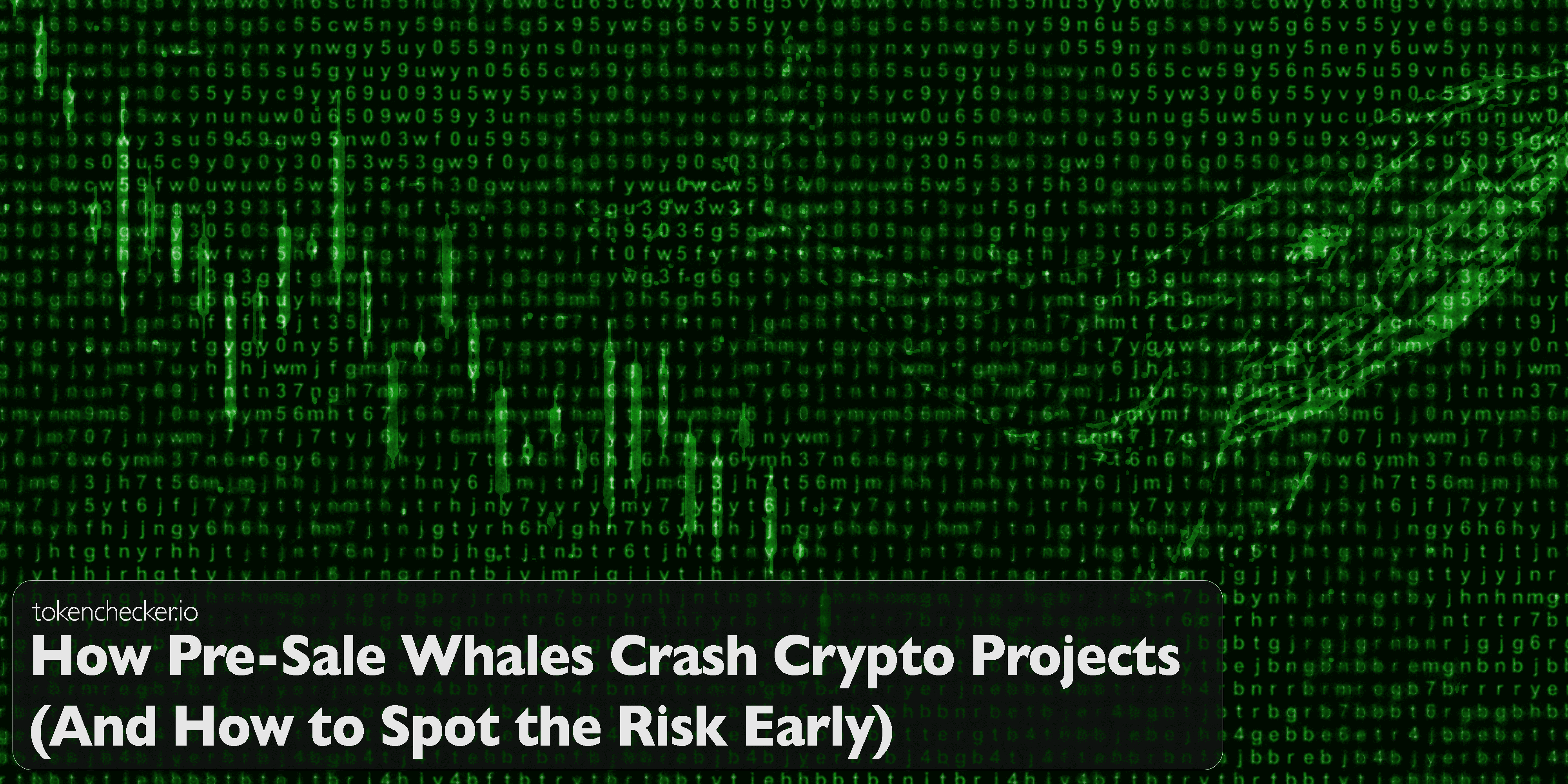
How Pre-Sale Whales Crash Crypto Projects (And How to Spot the Risk Early)
Introduction
Some crypto projects crash before they even get going. Others seem to have strong communities and good momentum, only to tank a few days or weeks after launch. More often than not, the cause is the same: pre-sale whales.
These early investors buy tokens at deep discounts before the public ever sees them. When the token goes live, they dump their bags for profit and the price collapses. The worst part? This crash is often built into the project’s design from day one.
This guide breaks down how pre-sale whales work, why they're such a risk, and how tools like tokenchecker.io help you spot the warning signs early.
What Is a Pre-Sale Whale?
In crypto, a whale is anyone who holds enough tokens to move the market. A pre-sale whale is someone who got their tokens early during private or pre-sales usually at steep discounts.
They might be venture capitalists, insiders, or just well-connected traders. Either way, they often get massive allocations while the token is still in stealth or development. Once the public launch hits, they’re sitting on huge unrealized gains. And when they sell, it can crash the whole market.
Why Pre-Sale Whales Are So Dangerous
1. Deep Discounts = Big Incentive to Dump
If you buy tokens at $0.01 and they launch at $0.10, you’re already up 10x before doing anything. That’s a strong reason to dump.
Retail investors come in later, buying near the top often unaware that insiders are lining up to sell into the hype.
2. Low Liquidity Makes Everything Worse
New projects often have shallow liquidity. That means it doesn’t take much selling pressure to tank the price. If a whale dumps into thin liquidity, the price can drop 50% or more in seconds.
3. Lockups Don't Always Work
Some projects include vesting schedules to prevent instant sell-offs. But these aren’t always enforceable, or they’re too short to matter. Worse, developers might exclude their own wallets from lockups entirely something you can check for in the smart contract.
4. Centralized Supply= Centralized Risk
If 5 wallets hold 50% of the supply, the token isn’t decentralized. That means a few insiders control the market and your investment rides on their decisions.
tokenchecker.io's Top Holders and Holder Distribution tools can help you spot this imbalance instantly.
How Whales Trigger Price Crashes
When a pre-sale whale dumps their tokens:
- The market gets flooded with supply.
- There aren’t enough buy orders to absorb it.
- The price falls fast.
- Retail investors panic and sell.
- The crash gets worse.
Sometimes, whales intentionally manipulate the market using tactics like:
- Spoofing: placing fake orders to trick others into reacting
- Flash dumps: crashing the price, then buying back lower
- Social FUD: spreading fear online to trigger panic selling
It’s not always illegal, but it’s definitely not ethical.
Real-World Examples
FTT (FTX Token)
Binance dumped its massive holdings in FTT, triggering a full-blown crisis. Retail holders were crushed. Billions in value disappeared almost overnight.
PUMP Token
Despite raising $500 million, early investors dumped hard at launch. Within hours, the price crashed. There was no real utility just hype and early exit strategies.
$LIBRA
Promoted heavily, surged to a $4.4B market cap then insiders sold everything. Over $250M in losses for investors.
These cases share a common thread: early concentration of tokens, minimal controls, and pre-planned exits.
How to Spot Pre-Sale Whale Risk Before You Buy
1. Check Holder Concentration
Use tokenchecker.io to see how many wallets control the supply. If a handful of wallets dominate, the risk is high.
2. Review Vesting Schedules
Are early tokens locked up? For how long? Is the schedule clear, or vague? No lockup = instant exit risk.
3. Watch for Suspicious Wallets
Is the creator wallet selling early? Are there sudden transfers to exchanges right before unlock events?
tokenchecker.io’s Creator Wallet Monitoring and Transfer Tracking can highlight this kind of behavior.
4. Avoid the Hype Machine
Be skeptical of tokens promoted by influencers with no product. If everything rides on FOMO, you’re likely the exit liquidity.
Final Thoughts
Pre-sale whales can break a project before it has a chance to succeed. Their early access and oversized influence make them a built-in threat.
That doesn’t mean every pre-sale is bad. But if you're not checking tokenomics, wallet concentration, and contract control you're flying blind.
Use tokenchecker.io before you buy any token. It takes seconds to scan holder distribution, lockups, and developer behavior. It could be the difference between riding a moonshot or catching a dump.